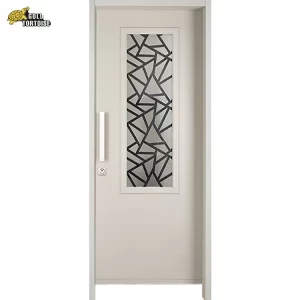The terms “door” and “door skin” refer to different components of a door structure. Here’s the distinction between the two:
1. Door:
A door is a complete and functional unit used to close off an entrance or access point in a building or structure. It typically consists of several components, including:
- Frame: The supporting structure attached to the wall.
- Jambs: The vertical sides of the door frame.
- Sill: The horizontal bottom part of the frame.
- Hinges: Attachments that allow the door to swing open and closed.
- Handle or Knob: The mechanism for opening and closing the door.
- Lock and Latch: Provides security by preventing unauthorized access.
- Panels: The primary surface or surfaces of the door, which may include decorative elements or glass inserts.
Doors come in various styles, materials, and sizes, serving different functional and aesthetic purposes. They can be made from wood, metal, fiberglass, or other materials.
2. Door Skin:
- Door skin refers to the outermost layer or surface of the door. It is the part of the door that is visible and can be touched. The door skin is responsible for the door’s appearance, and it may be made from different materials, such as wood veneer, metal, fiberglass, or other laminates.
- The purpose of the door skin is to provide a decorative and protective covering for the underlying structure of the door. Door skins can be designed to mimic the look of solid wood, metal, or other materials while often being more cost-effective.
In summary, a “door” is the complete unit that includes the frame, hardware, and other components, while the “door skin” specifically refers to the visible outer layer of the door. The door skin contributes to the door’s aesthetics and may be made from various materials to achieve different looks and functionalities.







